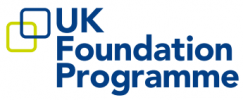When the form is signed, but the conversation isn’t
During one of my night shifts on the Acute Medical Unit, the emergency buzzer sounded for an elderly patient who had suddenly deteriorated. Despite prompt attendance, the patient sadly had passed away. A DNA CPR from was already in place, but it quickly became clear that the family, whom were present, were unaware of this decision. What should have been a calm and dignified moment became one filled with confusion and distress.
In the hour which followed, it became apparent the issue was not the clinical judgement itself, but rather how this had been communicated. The form was completed and the rational was sound yet the family had not been included in the conversation or formally informed. In those first moments, emotions ran high. Relatives were shocked that no resuscitation attempt had been made and questioning why ‘nothing was being done.’ Our team tried to comfort them, explaining the patient had been kept comfortable and the decision was made by the senior team. Their distress quickly turned into mistrust – towards the team and the hospital.
On reviewing the notes it appears the decision had been made during a busy day shift, with plans to discuss when the relative next visited however that follow up conversation never happened.
This night taught me how fragile the bridge between medical decision making and family understanding can be. DNA CPRs are often viewed as routine administrative tasks – a form to be filled and signed, but their human impact depends on how this is communicated. To a family unfamiliar with the hospital, this silence can feel like secrecy. When a patient dies and relatives are unaware of a DNA CPR, they will not only experience grief but a level of confusion and betrayal.
For me, this was a reminder that compassion extends beyond a symptomatic approach. It includes ensuring relatives know what to expect and that they have an opportunity to ask questions and develop their understanding. A few minutes of conversation during the day could have prevented an hour of anguish during the middle of the night.
Since that incident, I’ve changed the way I approach end of life documentation. Whenever I come across a DNA CPR I ask two questions – has the family been told? has this been handed over? If the answer is uncertain, I escalate it before the shift ends. It’s a small cultural shift, but one that promotes transparency and teamwork.
Looking back, this reminded me that medicine, at it’s heart, is about relationships. We can be clinically correct, but being emotionally present is what makes our care truly compassionate. Communication is not a soft skill – its an essential part of safe, dignified care.
Ishika Singh
F1, West Midlands Central Foundation School
All previous HOFP articles can be found on on our HOFP webpage
